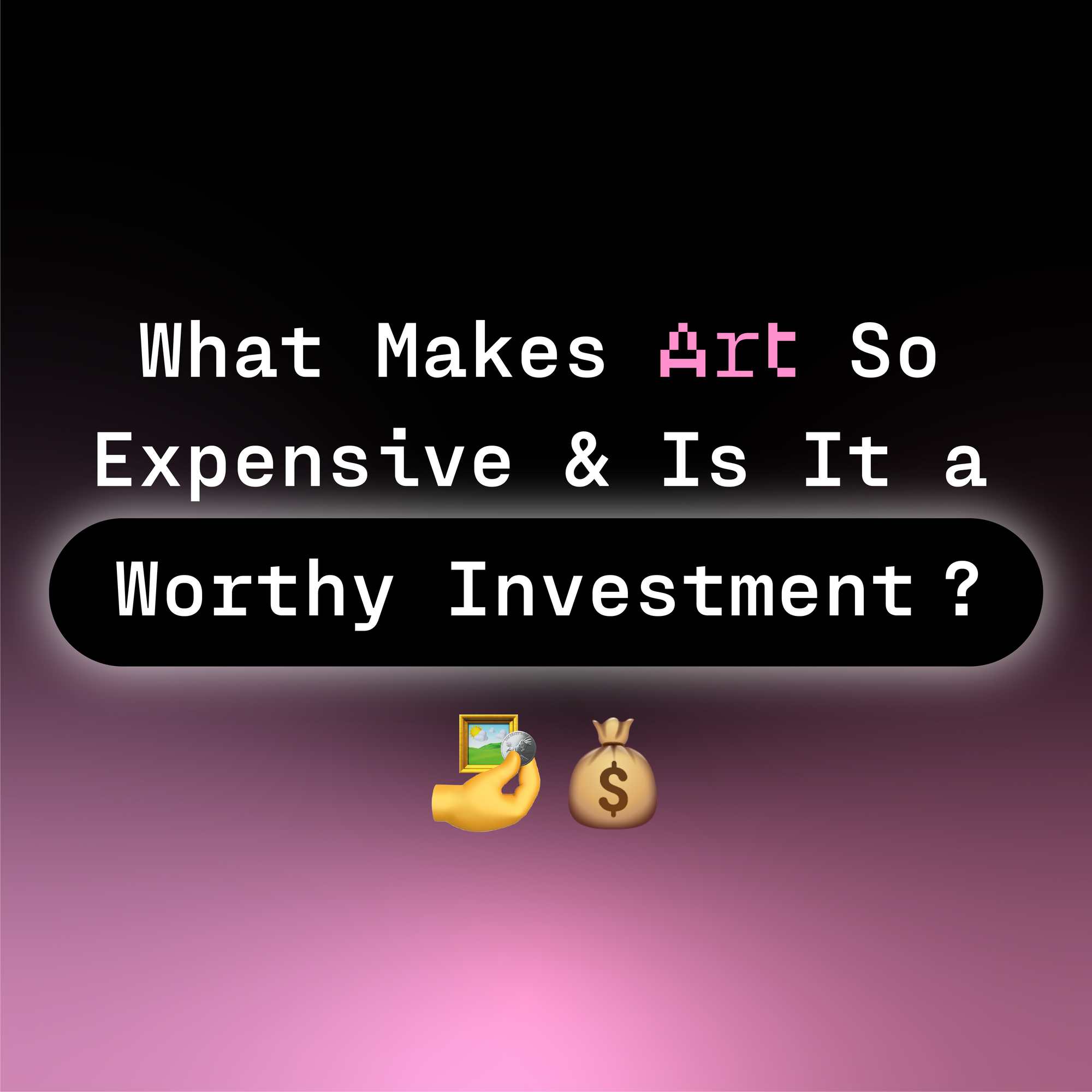What Makes Art So Expensive and Is It a Worthy Investment?
By Terrain.art | Jan 19 2022 · 5 min read
Contrary to popular belief, artworks may not be the best forms of investment, but their value as objects of pleasure continue to drive up their prices.
Now and then, we are bombarded with astonishing facts about the prices of artworks. In June last year, Sotheby’s sold Francis Bacon’s massive painting Triptych Inspired by the Oresteia of Aeschylus (1981) for a hammer price of USD 74 million. On the NFT front, American graphic artist Beeple’s digital artwork, Everydays: The First 5,000 Days, sold for USD 69.3 million in March 2021.
Facts Beyond Numbers
But beyond these record-breaking numbers, some hard facts point towards a different kind of reality. Despite astronomical prices, art as a capital asset performs poorly when compared to stocks, shares, and bonds.
A Canadian research paper analysed the auction prices of major Canadian painters between 1968 and 2001 and ran hedonic regressions (a model used to analyse the price of an item) to examine the influence of various factors, including a painter’s identity, on artwork prices. The analysis found that investing in art gives relatively lower returns than, say, investing in the stock market. Despite this, the art market is booming as art collectors continue to spend fortunes on acquiring art. This warrants the question: Why is art so expensive? What are the factors that drive up art prices?
The Consumption Value of Art
Experts point out that the value of a commodity need not always be measured in terms of tangible returns. In an edited volume, economist Michael Hutter makes a distinction between economics-centred notions of value and culture-centred notions of the same.
An artwork provides not just financial returns but also certain psychic benefits, which may be difficult to quantify but continue to influence the demand for art. Psychic benefits can be broken down into three main areas:
- One strong motivation among art collectors that fuel the demand for art is the desire to support the arts in general. Some of the greatest philanthropists of the world support the arts, as do major corporate houses. Many donate their personal collection to museums (think of Solomon Guggenheim) and art galleries. While this motivation is important, it does not directly affect auction prices of artworks.
- The second factor is related to the functional or decorative value of art. Every art piece has a functional or a decorative value, including adorning the walls of museums, galleries, or the houses of high net-worth individuals.
- The third factor is related to the prestige that comes with owning a work of art. In his perceptive research paper, economist Benjamin R. Mandel argues that while the average financial return on artworks is low compared to other capital assets like stocks, these are deemed as goods of “conspicuous consumption”. Art assets are appealing both for their ability to transfer consumption over time and for their use as signals of wealth.
It is this third factor that drives up art prices especially in the higher echelons of art circles. This also partially explains why some artists are more expensive than others. One study shows that only a handful of artists (25 artists to be precise) account for nearly 50% of all auction sales. The demand for the artworks of certain artists and their limited supply are mainly responsible for the upward price trend.
Marketing in the Art World
Studies also show that the price of an artwork is also dependent on the marketing blitzkrieg often undertaken by auction houses and galleries. Christie’s sale of Salvator Mundi, possibly painted by Leonardo da Vinci, is a case in point. The auction house touted the artwork as the only surviving painting of the Renaissance master that is still in private hands. The auction house followed it up with a press conference, and a plethora of digital content on the work, including a 33-second promo video.
Similar tactics are used in the NFT world, where word-of-mouth publicity can often drive up the price of NFT artworks. In a headline-grabbing incident, a masked man set on fire an original art piece by Banksy, only to sell the NFT-backed digital version of the same at a much higher price.
In conclusion, it may be said that a variety of factors, including the consumption value, marketing tactics and a plethora of new-fangled ways in the NFT world drive up art prices and make art so expensive. But if you are planning to buy art solely for investment, the returns might not always be as attractive as it seems.
You can now buy original artworks by talented South Asian artists from Terrain.art, which offers you unique digital tokens as certificates of authenticity.

